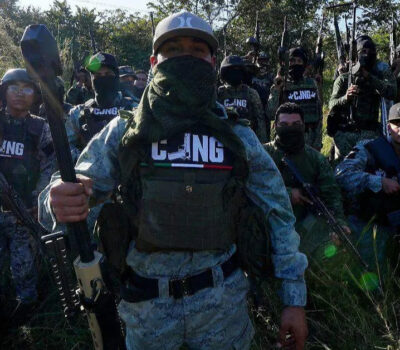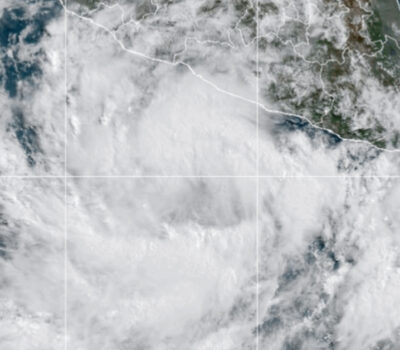Puerto Vallarta, Mexico – The Mexican peso strengthened on Tuesday, appreciating by 0.54 percent against the U.S. dollar, following the release of favorable inflation data for the first half of September and news of economic stimulus measures in China. According to Bloomberg, the exchange rate now stands at 19.31 pesos per dollar, marking a 10-cent decrease from the closing rate on September 24.
“The exchange rate gained ground after the publication of the official inflation figure for Mexico, which was lower than market expectations. This reinforces the anticipation of a 25 basis point cut in the reference interest rate by Banxico on Thursday,” stated Janneth Quiroz, director of economic and foreign exchange analysis at Monex.
Inflation Data Drives Peso Gains
The most recent inflation data from the National Institute of Statistics and Geography (INEGI) showed a notable decrease in Mexico’s inflation rate. For the first half of September, inflation moderated to 4.66 percent, compared to 4.83 percent in August. This marks the fourth consecutive fortnight in which inflation has declined, signaling a positive trend in the country’s economic stability.
Banxico’s Governing Board had already taken action in August by implementing a surprising 25 basis point cut to the interest rate, despite inflation remaining persistent at the time. That decision was split within the board, reflecting differing opinions on whether Mexico’s inflation had peaked. Banxico justified the decision by stating that while the inflationary outlook remained uncertain, recent trends suggested it was appropriate to begin easing the monetary tightening that had been in place to control rising prices.
Now, with inflation showing further signs of moderation, market analysts are increasingly confident that Banxico will proceed with another rate cut in its upcoming meeting. The prospect of lower rates could help stimulate further economic activity, boosting investment and consumer spending.
International Economic Impact
The peso’s appreciation has also been influenced by external factors, notably the announcement of stimulus measures in China. China’s government has pledged further support to its economy, which has been struggling with slower growth in recent months. The stimulus measures are seen as a positive development for emerging market currencies like the peso, as increased demand for commodities and raw materials from China could bolster Mexico’s export sector.
In global currency markets, the U.S. dollar weakened slightly, which further aided the peso’s gains. The dollar index (DXY), which tracks the strength of the U.S. dollar against a basket of six major currencies, dropped by 0.21 percent to 100.64 points. Additionally, the Bloomberg Dollar Index (BBDXY) fell by 0.29 percent, bringing it to 1,220.50 units. This decline in the U.S. dollar’s strength comes as investors adjust their expectations for the Federal Reserve’s monetary policy, with the likelihood of further rate hikes in the U.S. diminishing amid signs of cooling inflation.
At Mexican banks, the dollar is now being sold at 19.77 pesos per dollar, according to Citibanamex data, reflecting the peso’s continued strength in the wake of these economic developments.
Bond Markets React to Rate Cut Expectations
In response to the evolving inflation outlook and expectations of monetary policy adjustments, bond yields in both Mexico and the United States have shifted. In Mexico, the yield on the 10-year Mbono, a key government bond, is currently at 9.19 percent, reflecting the market’s anticipation of further interest rate cuts by Banxico. Meanwhile, the yield on the 10-year U.S. Treasury bond stands at 3.78 percent, as U.S. markets continue to digest recent inflation data and Federal Reserve signals.
Lower yields in the bond market typically reflect expectations of looser monetary policy, as investors anticipate central banks cutting rates to stimulate economic growth.
Banxico’s Balancing Act
Banxico has faced a delicate balancing act in recent months, managing inflation while also ensuring that the economy does not stagnate. The central bank has been cautious about easing too quickly, given the global inflationary pressures that have persisted since the pandemic, compounded by supply chain disruptions and higher energy costs.
However, the recent inflation data suggests that the situation is improving, giving Banxico more room to maneuver. Should the trend of falling inflation continue, the central bank may feel more confident in making additional cuts to its reference interest rate, which would likely provide further support to the peso and help stimulate domestic economic activity.
Despite this, Banxico has indicated that it will continue to monitor inflation closely. While the most recent data is encouraging, the central bank remains aware of the potential risks that could emerge from both domestic and international markets. Inflation could pick up again if energy prices rise or if supply chain disruptions worsen, particularly as the global economic outlook remains uncertain.
Economic Outlook for Mexico
The outlook for the Mexican economy remains cautiously optimistic. With inflation declining, there is a growing expectation that Banxico will continue to ease monetary policy, which could provide a much-needed boost to consumer spending and investment. Meanwhile, the peso’s strength, combined with China’s economic stimulus, could help Mexico’s export sector, which has been an important driver of growth in recent years.
However, risks remain. The global economy continues to face uncertainties, including the potential for a slowdown in major economies like the United States and China. Additionally, Mexico’s domestic challenges, including structural issues in its labor market and concerns about public security, could weigh on economic growth.
For now, though, the peso’s recent gains and the improving inflation outlook suggest that Mexico’s economy is heading in the right direction, with the potential for further growth in the months ahead. Whether this trend continues will depend on both domestic policy decisions and the broader global economic environment.
Puerto Vallarta, Mexico - The Mexican peso strengthened on Tuesday, appreciating by 0.54 percent against the U.S. dollar, following the release of favorable inflation data for the first half of September and news of economic stimulus measures in China. According to Bloomberg, the exchange rate now stands at 19.31 pesos per dollar, marking a 10-cent decrease from the closing rate on September 24.












